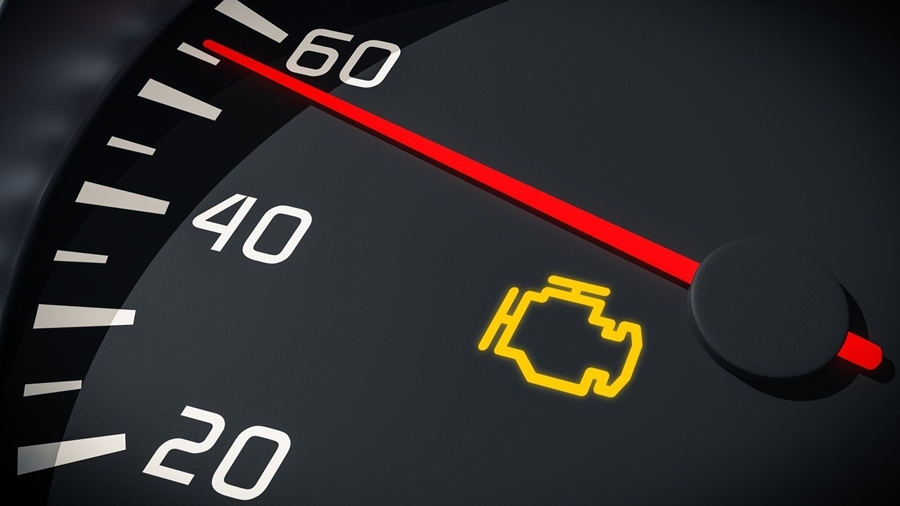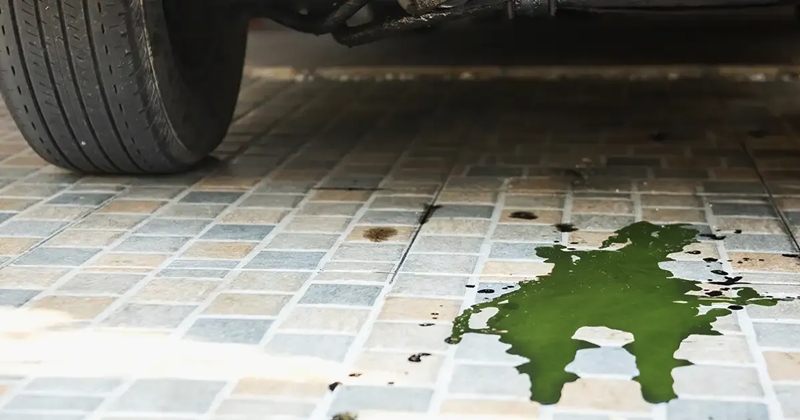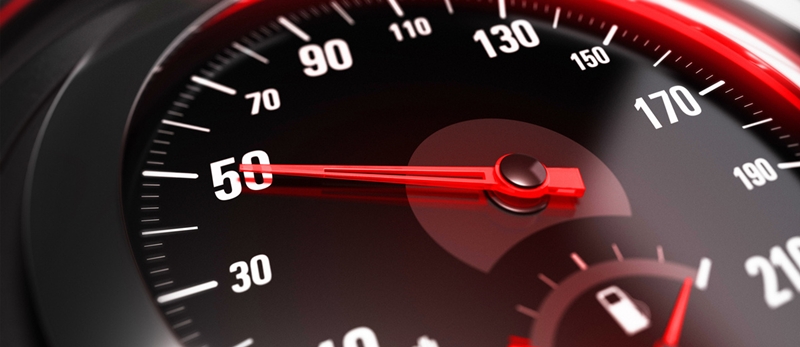Imagine you’re cruising down the highway, your favorite song is playing, and life feels good. Then suddenly, that dreaded amber glow catches your eye on the dashboard. The check engine light! Your heart skips a beat, but wait… your car is still running perfectly fine. What gives?
If your check engine light is on but the car runs fine, you’re not alone in this puzzling situation. Thousands of drivers face this exact scenario every day, and honestly, it can be pretty frustrating. One minute you’re confident about your vehicle, and the next you’re wondering if you’re driving a ticking time bomb.
Let’s dive deep into this automotive mystery and figure out what’s really going on under your hood.
Table of Contents
Understanding Your Check Engine Light: More Than Just a Scary Glow
The check engine light, also known as the malfunction indicator lamp (MIL), is your car’s way of saying “Hey, something’s not quite right in here!” But here’s the thing – it doesn’t necessarily mean your engine is about to explode or that you need to pull over immediately.
Think of it as your car’s version of a fever. When you have a fever, you might still be able to function normally, but your body is telling you something needs attention. Similarly, when the check engine light is on but the car runs fine, your vehicle’s computer has detected an issue that may not immediately affect drivability but still requires investigation.

It’s a common scenario – the check engine light is on but the car runs fine, leaving drivers puzzled and unsure of what to do next. Ignoring it could lead to long-term issues, even if nothing seems wrong on the surface.
The light connects to your car’s onboard diagnostic system (OBD-II), which constantly monitors various sensors and systems throughout your vehicle. When any of these sensors detect readings outside their normal parameters – boom – that amber light appears on your dashboard.
Common Reasons Why Your Engine Light Comes On Despite Normal Performance
Oxygen Sensor Issues
One of the most frequent culprits behind a glowing check engine light is on but the car runs fine scenario is a faulty oxygen sensor. Your car typically has multiple oxygen sensors that monitor the amount of unburned oxygen in your exhaust system. When these sensors start failing, they send incorrect data to your car’s computer.
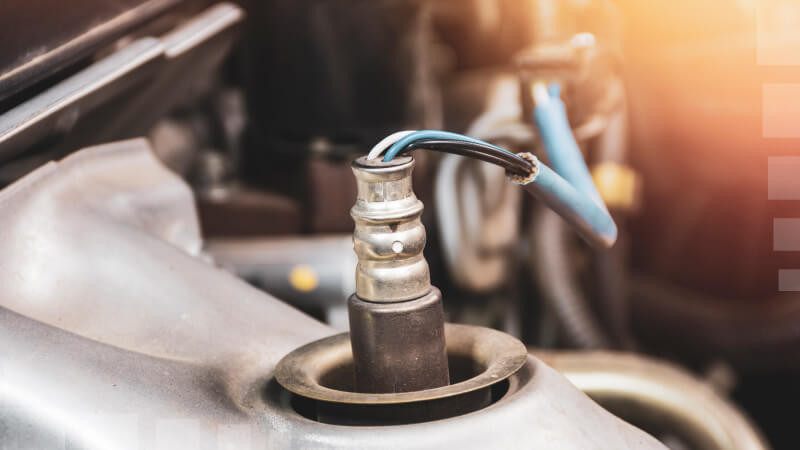
The sneaky thing about oxygen sensor problems? Your car might continue running smoothly for weeks or even months! This is a textbook example of when the check engine light is on but the car runs fine—you probably won’t notice any difference in how your vehicle drives, but your fuel economy might take a hit without you realizing it.
Loose or Damaged Gas Cap
Wait, what? Yes, something as simple as a loose gas cap can trigger your check engine light! I know it sounds ridiculous, but your fuel system is sealed, and even a slightly loose cap can cause pressure issues that your car’s computer interprets as a problem.
Before you panic about expensive repairs, try tightening your gas cap and see if the light goes away after a few driving cycles. If the check engine light is on but the car runs fine, don’t overlook this simple fix—you might feel pretty silly if this solves your “serious” car problem, but hey, we’ve all been there!
Catalytic Converter Problems
Your catalytic converter helps reduce harmful emissions by converting toxic gases into less harmful ones. When it starts failing, your check engine light is on but the car runs fine scenario becomes very common. The converter can become less efficient without completely failing, meaning your car drives normally but produces more emissions.
Why Your Car Keeps Running Despite the Warning Light
Here’s something that might surprise you: modern cars are incredibly sophisticated. Your vehicle’s engine management system can often compensate for minor issues, allowing normal operation even when something isn’t quite right. That’s a major reason why the check engine light is on but the car runs fine in so many cases.
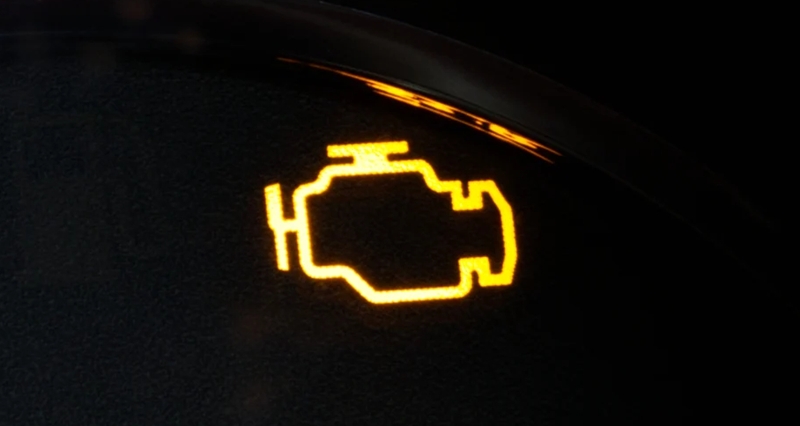
When your car’s computer detects a problem, it often switches to what’s called “limp mode” or uses backup strategies. For less serious issues, these compensations are so subtle that you won’t notice any difference in performance. Your car might be running slightly rich or lean, or timing might be adjusted slightly, but you’ll still get to work just fine.
It’s actually pretty amazing when you think about it! Your car is essentially problem-solving in real-time, making adjustments to keep you moving while flagging the issue for future attention. So if the check engine light is on but the car runs fine, thank your vehicle’s built-in resilience and clever software.
The Hidden Costs of Ignoring That Glowing Light
Okay, so your car runs fine – why worry about the light? Well, ignoring it can cost you more than you think. When sensors aren’t working properly, your engine might be working harder than necessary, burning more fuel, or producing excessive emissions.
Just because the check engine light is on but the car runs fine doesn’t mean everything is truly okay under the hood. I’ve seen cases where drivers ignored their check engine light for months, only to discover they were getting 15–20% worse fuel economy the entire time. At today’s gas prices, that adds up fast! Plus, if the underlying issue gets worse, you might face much more expensive repairs down the road.
There’s also the inspection issue. In many states, your vehicle won’t pass emissions testing with an active check engine light, regardless of how well it runs. Even if the check engine light is on but the car runs fine, it can still prevent you from renewing your registration until the issue is resolved.
Diagnostic Trouble Codes: Your Car’s Secret Language
When your check engine light is on but the car runs fine, your car’s computer has stored what’s called a diagnostic trouble code (DTC). These codes are like your car’s way of leaving you a note about what’s wrong.
The codes follow a specific format – they start with a letter (P for powertrain, B for body, C for chassis, U for network) followed by four numbers. For example, P0171 means your engine is running too lean, while P0420 indicates catalytic converter efficiency issues.
You can read these codes using an OBD-II scanner, which you can buy for around $20-50, or many auto parts stores will read them for free. Once you have the code, you can research the specific issue and decide how urgent the repair really is.

When to Panic vs. When to Stay Calm
Not all check engine lights are created equal! Here’s how to tell the difference:
Stay Calm If:
- The light is solid (not flashing)
- Your car drives, starts, and idles normally
- You don’t notice any unusual sounds, smells, or performance issues
- Your fuel economy seems normal
This is often the case when the check engine light is on but the car runs fine—your vehicle might have a minor issue that needs attention, but there’s no immediate danger.
Time to Worry If:
- The light is flashing (this indicates engine misfire)
- You notice rough idling, poor acceleration, or stalling
- You hear knocking, pinging, or unusual engine noises
- You smell fuel, burning oil, or coolant
- Your car is overheating
A flashing check engine light is on but the car runs fine scenario is unlikely—flashing means trouble. It’s your car’s way of screaming “HELP ME NOW!” It usually indicates an engine misfire, which can severely damage your catalytic converter if you keep driving.
DIY Diagnosis: What You Can Check Yourself
Before heading to the mechanic, here are some things you can check when the check engine light is on but the car runs fine:
The Gas Cap Test: Remove your gas cap completely, inspect the rubber seal for cracks or debris, then reinstall it firmly. You should hear it click. Drive for a few days – the light might go away on its own if this was the cause.

Visual Inspection: Pop the hood and look for obvious issues like loose connections, cracked hoses, or anything that looks out of place. You’re not trying to rebuild the engine—just looking for noticeable problems that could explain why the check engine light is on but the car runs fine.
Check Your Fluids: Low oil, coolant, or other fluids rarely trigger the check engine light directly, but they can cause problems that do. Make sure everything is at proper levels.
Listen to Your Car: Start paying attention to how your car sounds. Any new noises, vibrations, or changes in how it idles or accelerates?
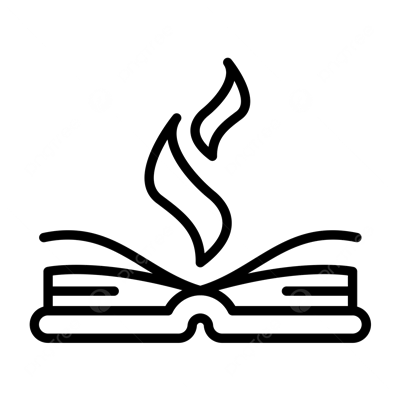
Common Myths About the Check Engine Light
Myth #1: “If the car runs fine, the light doesn’t matter”
Truth: While your car might seem okay now, ignoring the issue when the check engine light is on but the car runs fine can lead to bigger, more expensive problems later. That oxygen sensor issue could eventually damage your catalytic converter, turning a $200 repair into a $2000+ nightmare.
Myth #2: “The light will turn off by itself if you ignore it long enough”
Truth: Sometimes it might, but usually only temporarily. The underlying problem is still there, and the light will likely return. Plus, your car’s computer stores the trouble code even if the light goes off. If the check engine light is on but the car runs fine, don’t assume that everything has magically fixed itself.
Myth #3: “Check engine lights are just a scam to get you to spend money”
Truth: While some unscrupulous shops might oversell repairs, the check engine light serves a real purpose. It’s required by law to help reduce vehicle emissions and can actually save you money by catching problems early—even when the check engine light is on but the car runs fine.
Myth #4: “You can just disconnect the battery to reset the light”
Truth: This might temporarily turn off the light, but it doesn’t fix the underlying problem. The light will come back on, and you’ll also lose other settings like radio presets and learned engine parameters.
The Real Cost of Check Engine Light Repairs
Let’s talk money – because that’s what we’re all really worried about, right? The cost to fix whatever’s causing your check engine light varies wildly depending on the problem.
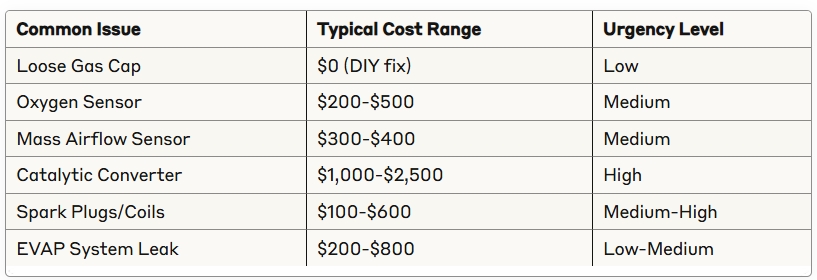
The key is getting an accurate diagnosis before agreeing to any repairs. A good mechanic will explain exactly what’s wrong, why it needs fixing, and what happens if you wait.
How Long Can You Drive With the Light On?
This is the million-dollar question, isn’t it? The honest answer: it depends entirely on what’s causing that light to come on.
If your check engine light is on but the car runs fine, and the problem is something minor—like a loose gas cap or a faulty oxygen sensor—you might be able to drive for weeks or even months without any immediate issues. That said, this doesn’t mean you should just ignore it. Even when the check engine light is on but the car runs fine, you’re still taking a risk.
Minor issues can quietly lead to more serious problems over time. For example, a bad oxygen sensor might not seem urgent, but it can cause your engine to run inefficiently, which in turn can lead to damage in more expensive components like your catalytic converter. That quick $300 fix could balloon into a $2,000 repair if left unchecked.
So how long is too long? If your check engine light is on but the car runs fine, a good rule of thumb is to get it checked out within a week or two. You don’t need to panic or rush to the shop the same day, but waiting several months could mean you’re unknowingly shortening the life of your engine or emissions system.
Bottom line: even when your check engine light is on but the car runs fine, it’s your car’s way of saying “please check me out.” Better to spend a little time and money now than a lot more later.
Prevention: Keeping Your Check Engine Light Happy
To avoid those dreaded “check engine light is on but the car runs fine” moments, be proactive:
- Regular Maintenance: Follow your car’s maintenance schedule religiously. Oil changes, air filter replacements, and scheduled services can prevent many issues that trigger the check engine light.
- Quality Fuel: Use quality gasoline from reputable stations. Cheap, low-quality fuel can cause sensor problems and carbon buildup over time.
- Don’t Ignore Small Issues: That slight hesitation during acceleration or minor rough idle might seem insignificant, but addressing small problems early prevents bigger ones later.
- Keep It Clean: A clean air filter helps your engine breathe better, and clean fuel injectors help it run efficiently. Both reduce the likelihood of check engine light issues.
Should I Drive or Call a Tow Truck? Your Decision Flowchart
When your check engine light comes on, the big question is always: “Can I keep driving?” Here’s a visual decision tree to help you make the right call:

The Bottom Line: If your car feels, sounds, and drives normally with a solid (non-flashing) check engine light, you can usually drive safely to a repair shop or auto parts store for diagnosis. But don’t ignore it for weeks!

Frequently Asked Questions
-
Can I pass inspection with my check engine light on?
In most states, no. The check engine light is part of the emissions system, and an active light typically means automatic inspection failure, regardless of how well your car runs—even if your check engine light is on but the car runs fine.
-
Will the check engine light reset itself?
Sometimes, but not always. If the problem is intermittent, the light might go off temporarily, but it will likely return. The diagnostic code remains stored in your car’s computer even if the light turns off.
-
Is it safe to drive long distances with the check engine light on?
If the light is solid (not flashing) and your check engine light is on but the car runs fine, short to medium trips are usually okay. For long road trips, it’s best to get it diagnosed first to avoid being stranded far from home.
-
Can weather affect the check engine light?
Absolutely! Extreme cold or heat can cause sensors to act up, vacuum hoses to crack, or seals to fail. Some check engine lights only appear in certain weather conditions.
-
How much does it cost to diagnose a check engine light?
Most shops charge $100–$150 for diagnosis, though some will apply this toward repair costs. Many auto parts stores will read the basic code for free, but professional diagnosis goes much deeper.
-
Can I drive with a flashing check engine light?
No! A flashing check engine light indicates engine misfire, which can damage your catalytic converter. Pull over safely and have your car towed to a repair shop—even if the check engine light is on but the car runs fine, flashing always means stop.

Final Thoughts
When your check engine light is on but the car runs fine, it’s natural to feel confused and frustrated. The good news is that this situation is usually more of an inconvenience than an emergency. Your car is designed to keep running safely even when certain sensors or systems aren’t working perfectly.
However, don’t let this lull you into ignoring the problem entirely. That little amber light is your car’s way of asking for help, and addressing issues early almost always saves money in the long run. Think of it as preventive healthcare for your vehicle.
Need a mechanic? Find one on the Mobile Mechanic Directory
The key is finding the right balance between panic and procrastination. Get your car diagnosed reasonably soon, understand what’s wrong, and make an informed decision about repairs based on your budget and the urgency of the issue. Even if the check engine light is on but the car runs fine, that doesn’t mean the underlying issue won’t get worse over time.
Remember, modern cars are incredibly reliable, and most check engine light is on but the car runs fine situations are caused by relatively minor issues. With proper diagnosis and timely repairs, you’ll have that annoying light turned off and peace of mind restored. Your car has been taking care of you by continuing to run well despite its concerns – now it’s time to take care of it in return.
Stay calm, get informed, and keep driving safely. That check engine light doesn’t have to ruin your day or your budget if you handle it smartly!

